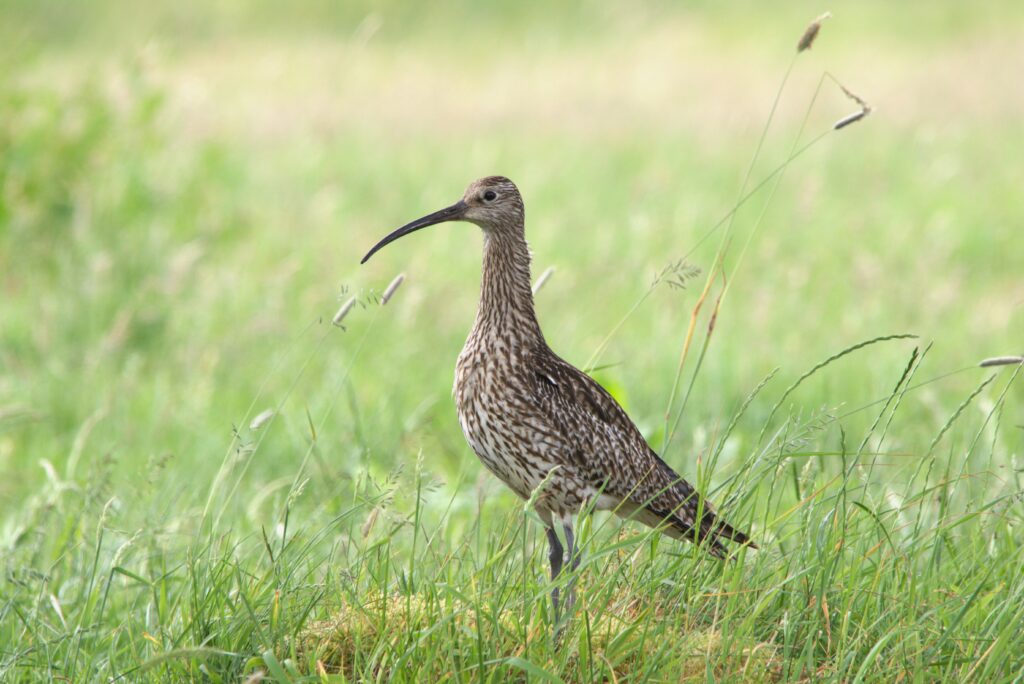
Learn about Curlew
Curlew (Numenius arquata)
The curlew is Britain’s largest wader, known for its bubbling call and long beak. In winter they migrate to the coast, where they are joined by curlews from northern Europe. They return to their breeding territories in April, lay eggs at the start of May, with chicks fledging from mid-July. Curlew nest on the ground in open grassland and moorland. Good curlew habitat is usually wet, grazed grassland, or hay meadows with few trees or scrub for predators to hide in.

What does a Curlew call sound like?
The Eurasian Curlew like other birds have many different calls depending on the situation. Click play on the three different calls you might expect to hear: